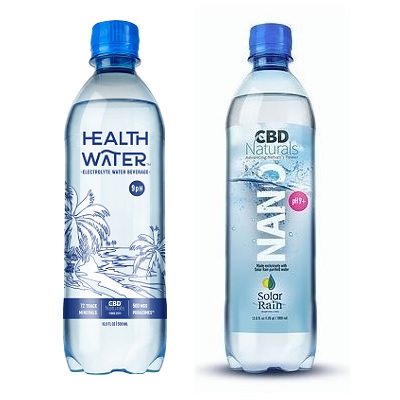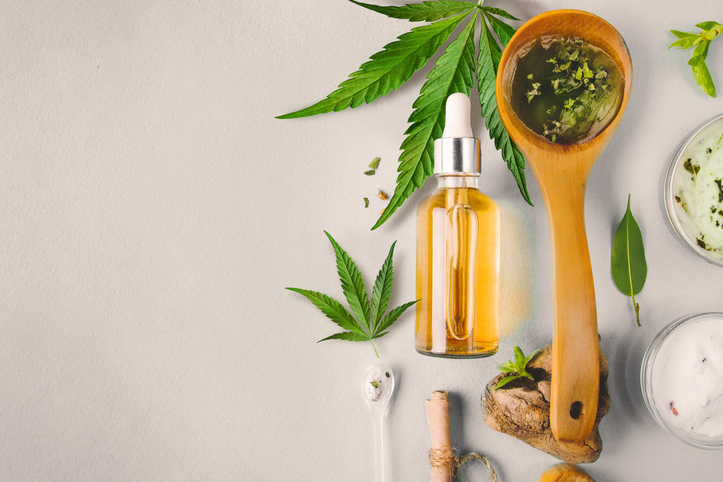
An allergy is an allergic reaction to marijuana. It can attack a harmless substance and cause skin reactions such as itching. There are many proteins found in marijuana, and they are also found within other foods. If you have an allergy to one, you may have an allergy to the others. Doctors will diagnose a marijuana allergy using symptoms. To rule out other allergies, they may perform an allergy test. This test involves applying a small amount of the allergen to a break in the skin, and watching the reaction.
Test your skin
A skin test may be the best way to discover if your allergy is to marijuana. The skin test involves poking your skin to expose the underlying layers to marijuana. It is possible to have an allergic reaction in as little as 15 minutes. However, if you don't have any symptoms, it may take longer.
People with allergies to marijuana should stop smoking immediately, wear protective masks and gloves and use decongestants to help treat their symptoms. They may also need to always have an auto-injector of epinephrine on hand. Lastly, they should avoid any environment where they can come into contact with marijuana or its pollen.

Symptoms
Multiple symptoms may be associated with an allergy. Some symptoms can be more severe than other. An allergy to cannabis could be a result of constant coughing, sore throats, or a persistent, severe condition. You can test your skin to determine if you are allergic to cannabis. You will need to apply an allergen and prick your skin.
Skin tests can be very useful but not always accurate. Even though a skin test may show an allergic reaction, that doesn't necessarily mean you will have symptoms if you are exposed to the plant again. Another important diagnostic tool is blood tests.
Cross-reactivity with other allergens
Some fruits and vegetables can also cause allergic reactions in people who are allergic to cannabis. This is known as the cannabis-fruit-and-vegetable syndrome. It is caused by the same allergen (LTP), which is also found in certain legumes, plants, and grains. LTP, a strong allergen, is resistant to heat. Citrus fruits, peanuts, and peaches are some of the most common foods and vegetables that can cause Cannabis allergies.
A Belgian study found that cannabis-allergic patients were more likely than others to develop food allergies. In addition, marijuana-allergic patients had gastrointestinal symptoms, such as diarrhea, and they often also had anaphylaxis-like reactions. Many fruits and veggies contain allergens cross-reactive to marijuana. Moreover, some people with this allergen may also experience oral allergy syndrome, a severe gastrointestinal condition that requires emergency medical attention.

Treatment
Treatment for an allergy to marijuana varies, depending on the cause of the reaction and the severity of the allergy. The skin prick test involves injecting small amounts of the allergen into the skin. In some cases, an intradermal exam may be necessary. A blood test can also be done to confirm an allergy.
You can control symptoms of an allergic reaction to marijuana by not smoking or wearing protective clothing. Some people can't avoid exposure to airborne marijuana. Doctors may prescribe antihistamines and decongestants. These people may need protective equipment such as a helmet or mask.
FAQ
What conditions can be treated with CBD?
The most important thing for any treatment to have an effect on is the person's health condition. You must have a prescription from a doctor before you use cannabis oil as medicine. It is also illegal for someone to prescribe cannabis oil without a doctor's consent.
You don't need a prescription if you use cannabis oil to support a healthy lifestyle. However, you may want to talk to your doctor first just to make sure they agree that it would be safe for you to take it.
Cannabinoids are either extracted from whole plants or cannabinoids (THC, CBN) isolated compounds. Cannabis oils are made from these extracts. They contain many different cannabinoids including CBD (CBD), Tetrahydrocannabinol THC (THC), as well as cannabinol CBN (CBN).
These components interact with the receptors in the body to produce pain relief, stress management, anti-inflammatory and antioxidant effects.
Where can I get CBD products?
CBD can be purchased online and at local retailers. You will find better deals at online retailers. Many websites sell CBD products made with industrial hemp. The THC content is less than 0.3%.
You can shop locally if you prefer to buy CBD products from brick-and-mortar stores.
Many states now have laws allowing consumers to buy CBD products without a prescription. CBD products might be available for purchase at your local pharmacies if you're a resident in one of these states.
CBD products may be delivered right to your doorstep.
What amount of CBD do I require?
Dosing depends on what type of product you're buying.
CBD oils come in a variety of strengths, ranging from 100mg-1000mg per bottle.
Some CBD products are made with precise dosages.
Charlotte's Web, for example, makes CBD products that contain precise amounts of CBD.
Start with a low dosage if you are unsure if CBD is right for you.
You can always go up later.
Is CBD still a viable alternative?
The answer is yes. But not because of its medical benefits but rather due to its ability to help people feel better without getting high.
The fact that it doesn't make you feel any different when you use it makes it perfect for those who are looking for an alternative to prescription drugs.
And as we know from studies, there is a lot of evidence showing that cannabis helps with pain relief, anxiety, depression, insomnia, and many other conditions.
Cannabinoids are also found in cannabis, which interact with brain receptors. This interaction leads to feelings of relaxation.
Cannabidiol (CBD), oil can be used for health purposes. It's therefore important to fully understand its functions and effects.
Is the CBD industry saturated?
CBD is seeing a steady growth rate of 25 percent annually. This growth will continue at least five years. According to industry projections, it will grow from $2 billion to $5 billion by 2020.
The CBD market is currently dominated by two companies - GW Pharmaceuticals and Canndoc Ltd. Both companies have a focus on creating pharmaceutical-grade products. But they have not been particularly successful. Both of them are having difficulty gaining traction in today's marketplace.
Cannabidiol or CBD is a form of cannabis extract with less than 0.3% HHC. It does not produce any psychoactive effects. It can be used to treat epilepsy or other medical conditions. It is also used to supplement a diet.
There are many varieties of CBD products. Some are made using whole plant extracts, while others use isolated cannabinoids such as CBD.
All of these products share one thing: They contain low levels THC.
These products are legal under US federal law. This doesn't mean you shouldn't follow local laws when selling CBD-related products. You should always verify your state's regulations for the sale of CBD products.
There are also several states that CBD products are prohibited. These states include California, Colorado and Mississippi, Missouri. New York, North Carolina. Ohio. Oklahoma. Oregon. Rhode Island. South Dakota. Texas. Utah. Virginia. Washington.
If you live in one of these states, then you will probably want to avoid making CBD products.
Is there evidence that CBD reduces anxiety?
CBD oil works well to reduce anxiety. This is because it interacts directly with CB1 or CB2 brain receptors. The endocannabinoid process regulates stress responses and mood.
CB1 receptor activation occurs when our bodies feel anxious. This receptor triggers the amygdala to activate, which is responsible in emotional processing.
When the CB1 receptor is blocked, the amygdala doesn't receive the signal to process emotions. As a result, people who take CBD experience fewer negative feelings.
A study published in 2017 showed that CBD reduces anxiety in patients with social phobia. Another study found that CBD reduced symptoms of PTSD.
A 2018 review concluded CBD's anxiolytic qualities could be helpful in treating generalized anxiety disorder.
Another review suggested that CBD might also reduce panic attacks.
However, several studies have shown that CBD actually increases anxiety levels in mice.
The researchers believe that this discrepancy between human data and animal results may be due to differences in how humans and animals respond to CBD.
CBD has not been shown to be safe long-term. Experts are unanimous that CBD is safe if used as directed.
What are some of the common mistakes that companies make when entering America's cannabinoid market
It is easy to make a mistake by not knowing the regulations surrounding cannabis products. This could result in you needing to alter your product formulation.
Unskilled labeling is the second. You must know whether your product contains CBD, THC, or both.
The third thing you need to do is understand how to package your product properly. If your product contains THC, you need to ensure it is packed in child-resistant containers.
You can still use all the packaging laws even if your product contains no THC. Many states have legalized cannabidiol (CBD).
Finally, you should always keep track of any recalls on your products. If there is a problem with your product, it is important that you inform customers as quickly as possible.
Statistics
- As a substance that was federally illegal before the passage of the 2018 Farm Bill, hemp-derived cannabinoids with no more than 0.3% THC still face a regulatory grey area. (forbes.com)
- A recent study [161] also found that in vitro CBD treatment (i.e., ≤ 2 h exposure to 10 μM) induced ~40% vasorelaxation in isolated (pre-constricted) (ncbi.nlm.nih.gov)
- OralWhere HED is the human equivalent dose, and Km is a correction factor estimated by dividing the average body mass (BM) of the species (60, 0.020, and 0.150 kg for 11 humans, mice, and rats, respectively) and by its surface area (see: Nair et al. (ncbi.nlm.nih.gov)
- CBD seems unlikely to directly influence sleep in healthy humans [115] (and maybe “sleep-promoting” in those with certain comorbid conditions) (ncbi.nlm.nih.gov)
- The inhibition of FAAH is predicted to lead to an increase in brain and plasma concentrations of AEA, which acts as a partial agonist at CB1R and CB2R, thereby increasing endocannabinoid tone [92, 110]. (ncbi.nlm.nih.gov)
External Links
How To
How to Get Certified To Sell CBD Products
CBD (cannabidiol) is one of the hundreds of cannabinoids found in cannabis plants. It has been used medicinally for centuries, even in South American countries like India, China, and China. Due to its ability treat conditions like anxiety and pain, epilepsy, inflammation, and other ailments, it has become increasingly popular. The U.S. does not have an official certification program yet for CBD products. Therefore, anyone wanting to make a living selling CBD products must rely on their "unofficial" self-certification.
There are two ways you can go about it. The first option is to join a canna business association. By joining a local association of canna-business owners, you will be able to learn from others and receive support and advice. There are currently many associations across the country. You can also go online and start your own business. Most states now allow canna-businesses to operate online. If this is the case, then you can establish your own website immediately and start accepting orders. However, registration is required with your state Department of Public Health. After you have registered, you can apply for a license from your state's Department of Public Health. Once you have received your license you are officially authorized to open your store, accept orders, and close it.